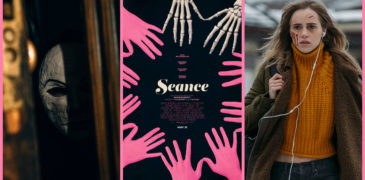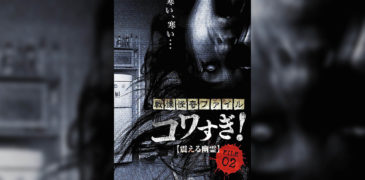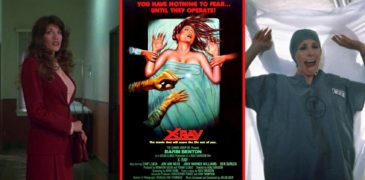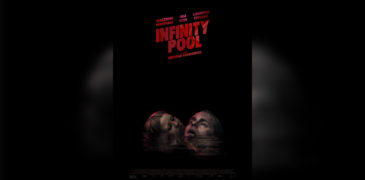
“Yodel me this!” – Heidi
Long before home media and even longer before video streaming, the only way to see original movies was to go to the theater. Most theaters concentrated on showing popular content, movies made for their wide box-office appeal from major film studios. Despite the rare “art house” cinemas, the other alternative to watching something besides Hollywood’s mainstream movies might be found in theaters specializing in “Adults Only” movies. Theaters like this were called Grindhouse Cinemas, where courageous movie goers could find them in urban areas. However, some rural drive-ins would sometimes serve a similar purpose, mixing in adults-only programs with the more profitable family fare.
The main target audience of grindhouse (or exploitation) cinemas was certainly younger adult males. With looser standards than general theaters, grindhouse cinemas dared to show movies that pushed the boundaries of what was decent. These low-budget, “exploitation” movies promised an hour full of anything from gritty African-American urban tales, Nazi soldiers torturing prisoners of war, the private lives and loves of cloistered nuns, car chases with explosive endings, softcore pornography, poorly dubbed Kung Fu movies, or stories about women in prison, to name a few. Their subgenre names were portmanteaus of the film’s focus and “exploitation” – blaxploitation, Nazisploitation, nunsploitation, sexploitation, and so on. Made to excite and titillate audiences, these films were considered disposable. Yet they have stood the test of time, delivering a cultural impact on popular, safe cinema.

There has been a recent slew of successful (mainstream) modern films that are throwbacks to the scratched negatives and crackly soundtracks of these older films. Quentin Tarantino/Robert Rodriguez double feature Grindhouse (2007) and last year’s X from Ti West are two examples of movies seeking to give viewers an approximation of sitting in a cramped theater, redolent of stale bodily fluids and popcorn butter or crowded in the bed of a pickup truck at an outside, drive-in theater. The latest entry in this contemporary, yet firmly grounded in the past genre, is Swissploitation Films’ Mad Heidi (2022), a neo-exploitation movie that gives viewers a loving, tongue-in-cheek look at those renegade films of the past.
The way movies get made and distributed has changed. Instead of looking to studios for financial backing and large corporations for distribution (at the cost of creative control and the film’s profits), filmmakers are employing creative solutions. A group of self-proclaimed exploitation film nerds made up of co-directors and screenwriters Johannes Hartmann, and Sandro Klopfstein, with writer Gregory D. Midmer and producer Valentin Greutert funded Mad Heidi by appealing directly to fans for funding. They did this in the spirit of making their movie “… available for everybody (with a credit card, of course).” Klopfstein, Midmer, and the rest wanted the profits “to go to the people who really deserve it: the investors and creators, not global corporations.” SOURCE
In a dystopian Switzerland that has fallen under the fascist rule of an evil cheese tyrant (Casper Van Dien), Heidi (Alice Lucy) lives the pure and simple life in the Swiss Alps. Grandfather Alpöhi (David Schofield) does his best to protect Heidi, but her yearning for freedom soon gets her into trouble with the dictator’s henchmen (Max Rüdlinger, Katja Kolm and Pascal Ulli). The innocent girl transforms herself into a kick-ass female fighting force who sets out to liberate the country from the insane cheese fascists. Source.
The poster for Mad Heidi claims the title of the first Swissploitation movie, but this is only half true. There was no Swissploitation subgenre before Mad Heidi. That doesn’t mean that Switzerland, the land of fine timepieces and discrete banking, was not a significant contributor to the genre. Swiss producer, writer, and director Erwin C. Dietrich’s studio in Rümlang, a short train ride from Zurich, was the source of many exploitation films. Using techniques he learned from American filmmakers, his studio churned out films at a fast pace. Quentin Tarantino respectfully dubbed him the Swiss Roger Corman.
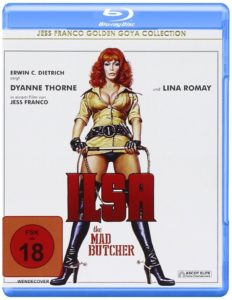
Dietrich’s career as an exploitation filmmaker began in the mid-1960s when he realized that increased sexual content increased a movie‘s profitability. Focusing on what was called “sex films,” he unleashed a tide of commercially successful, dirndl-and-lederhosen soft-core films that spanned many genres – westerns, war movies, untamed youth, etc. Attracted to the bare flesh featured on the posters, young men would buy their tickets, gambling whether the film inside matched its advertising.
Spanish-born, ne plus ultra exploitation auteur, Jesus Franco found a home in Rümlang. The two men had a good working relationship and Franco made some of his best films with Dietrich. On the lookout for ways to get more viewers and increase profits, Dietrich renamed Franco’s Greta: Haus Ohne Männer, to Ilsa, the Wicked Warden, hoping to take advantage of Dyanne Thorne’s (the leading lady of both) association with the previous Ilsa films.
President Meili: Faster pussycat!
Crowd: Kill! Kill!
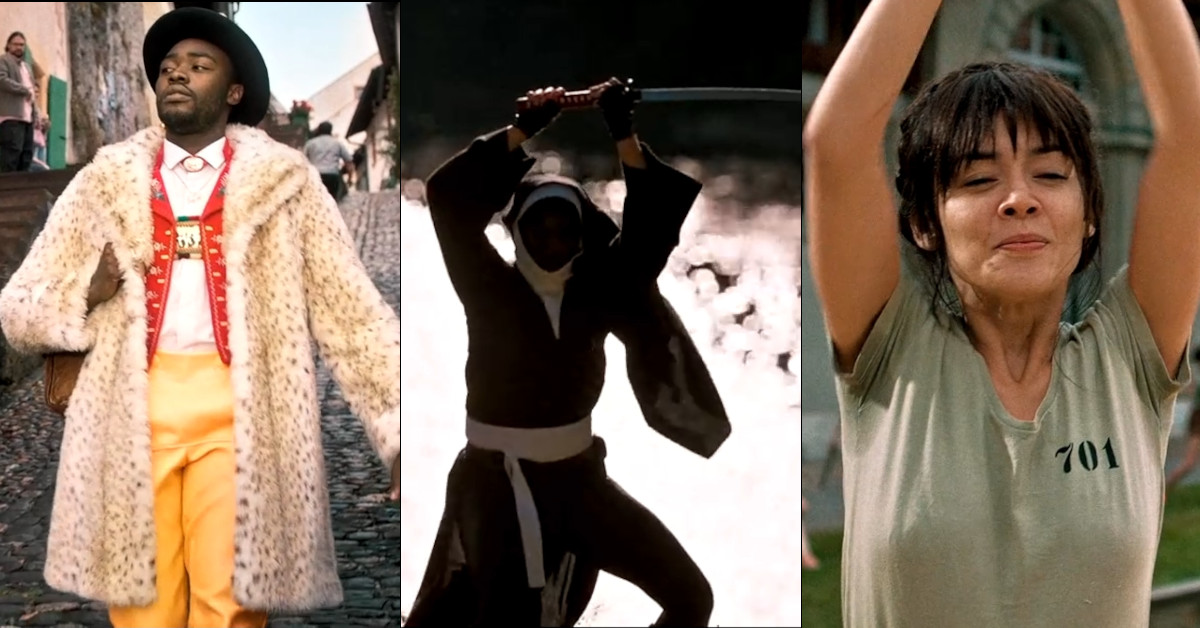
Mad Heidi drops references to a multitude of sources over its 93-minute run time. The original Heidi, from the eponymous 1891 novel and most endearingly portrayed by Shirley Temple in the 1937 film, was a young indomitable girl who faced every situation with cheerfulness and compassion that conquered all. Hartmann, Klopfstein, and Midmer reimagine the simple mountain girl who was the template of childhood innocence, into a lusty, kickass, revolutionary hero.
Several characters from the novel get similar makeovers. Peter the goatherd becomes Goat Peter, Heidi’s lover, and a dealer of contraband cheeses. Klara, the girl in the wheelchair that Heidi befriends, appears as one of Heidi’s fellow inmates in prison. She becomes paralyzed in the gladiator arena and Heidi wheels her to safety in the finale. And the novel’s evil nurse/nanny, Fräulein Rottenmeier, morphs into a sadistic prison warden, Fräulein Rottweiler.
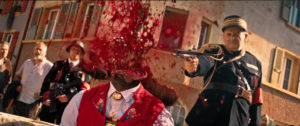
One thing that Mad Heidi has going for it that original grindhouse films from the 1970s did not is its high level of competency. Old grindhouse films suffered from low budgets, rushed production schedules and inexperienced actors and crews. It is a well-made film with a clear soundtrack, lush visuals, and some pretty good special effects. Mad Heidi doesn’t skimp on the gore and gooey stuff as faces erupt in boils and blood flies often and everywhere in strong streams. Unlike the older films that bridged the space between action scenes with filler, viewers are hit with a constant onslaught of movie references, bloody fight scenes, and plenty of very non-Swiss visuals such as Katana-wielding nuns.
Mad Heidi is the best kind of parody – full of irreverent humor but much more than a string of gags. As filmmakers say on the website, “We just love the kind of movies that don’t take themselves too seriously. Even though making movies is very serious business!” This seriousness pays off well. Mad Heidi is a much more enjoyable film than many of the movies it calls back to.

Mad Heidi is one of the latest films that tries to give its viewers an authentic-looking, 1970s-era, grindhouse experience. Movies from this era were low-budget features that used lurid advertisements to entice viewers looking for content not available in regular theaters. Like many similar films that are cashing in on the faux nostalgia trend, Mad Heidi at times feels like a patronizing parody of the genres it is emulating. Modern audiences don’t need to be in on the jokes to appreciate its splat-tacular goriness and over-the-top absurdity. Even though Mad Heidi makes plenty of references to older films, it is nothing like them, und das ist nicht so schlecht! Ja sicher.
Mad Heidi is currently streaming at madheidi.comand is available to purchase here*
*Affiliate Link
Our contest: Mad Heidi references many different films from around the world. Mad Heidi’s producers put up this video showing some of their influences. The first ten people that correctly identify all 17 movies will receive a 15 franc coupon for Meili’s Ultra Swiss Cheese!
More Film Reviews
Blood in the Snow (BITS) is a Toronto-based horror film festival that is presenting its 9th annual line-up at the Royal Alexander Theatre from November 18-23, 2021. Festival director Kelly… It may seem odd to call a film as austere and violent as Undergods beautiful, with its bleak tones against a setting reminiscent of Cold War Era Brutalist architecture, all… Two of the things I liked about You’re Next (directed by Adam Wingard, written by Simon Barrett) is a crafty and feisty final girl and a quick-witted script. With Seance,… After File 01 went off with a bang, Koji Shiraishi’s Senritsu Kaiki File Kowasugi! File 02: Shivering Ghost (2012) tries something different and turns out unexpectedly good. The first… *This is a guest article from Weirdling Wolf for the Grimoire of Horror! X-Ray has proven to be another welcome resurrection of a long-neglected slasher, helmed by genre polymath Boaz Davison;… Canadian director and writer Brandon Cronenberg’s third film, Infinity Pool, is a critically well-received, bewildering film that lends itself to widespread interpretation. Many reviewers discuss its timely, global topics such…Blood in the Snow Film Festival BITS 2021- Short Films Spotlight
Undergods (2020) Film Review: Beautiful and Brutal Art House Horror
Seance (2021) Film Review – A Giallo Flick Married To a Teen Slasher
Senritsu Kaiki File Kowasugi File 02: Shivering Ghost (2012) Film Review – You’ll never guess what happens next
X-Ray aka Hospital Massacre (1981) Film Review – A Long-Neglected Slasher
Infinity Pool (2023) Film Analysis – To Infinity and Beyond
I am a lifelong lover of horror who delights in the uncanny and occasionally writes about it. My writing has appeared at DIS/MEMBER and in Grim magazine. I am also in charge of programming at WIWLN’s Insomniac Theater, the Internet’s oldest horror movie blog written by me. The best time to reach me is before dawn.


